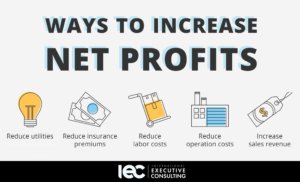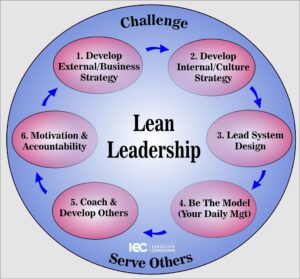One reason for hiring an interim manager is the speed at which they can be on-board; But this should not be the only reason to hire. We are trying to recruit more permanent candidates to be available in interim roles immediately as this is seen as an effective way to try someone before being given a permanent role. The risks of this strategy are many and should be carefully observed before starting.
The immediately available permanent candidate may be a cheaper resource, but will it be fully committed to the assignment, if it does not proceed to the permanent offer? Will they be totally committed to finishing the project if another permanent opportunity arises elsewhere? Will they have the experience to actually make an impact in the short-term?
Professional interim managers bring direct experience of delivering the issues of the client organization and can quickly adapt to varying cultures, making them highly effective in a very short time. Interim Managers are not focused on staying longer than needed and are not normally interested in taking a long-term permanent opportunity; outcomes and driving value are their key priorities. The costs will be higher but the outcomes and business benefits will be easily visible after the interim has left.

Interim Executives are the catalyst to positive disruption by offering:
Independence: With no historic attachment to the business, Interim Managers provide independent, committed support to the strategic direction of the business with no personal or political agenda. Many business cases are formulated with common and unclear benefits, making the measurement of delivery almost impossible. In addition, if the senior stakeholders have differing interpretations of the deliverables, there is little chance of successful delivery by Interim Executive.
Fresh Perspective: Organizations can often reduce the scale and complexity of a program and the risks associated for successful delivery on their first encounter with a major business change. Whilst the Interim Managers bring experience, having managed transformations of equal complexity and scale, they are able to highlight areas of potential financial and non-financial benefits & much quicker than internal staff.
Proven Track Record: Using interim managers instead of management consultants or inexperienced internal resources, clients have more control over results, maintain intellectual property and help reduce costs and risk associated with successful delivery.
Legacy: When utilizing any external expertise, there is a risk of losing significant knowledge and intellectual property when the project finishes. Management consultants will often walk away with this intellectual property, although interim managers will always try to transfer this knowledge to current internal staff.
To get regular updates, please follow us on social media.
Many private equity funds hear the term “Interim Executive” and think that the only application is turnaround or short-term maintenance. But for PE funds looking for great returns, they look interim for their unique abilities to create and transform companies.
Here are five major use cases for interim executives in PE-owned portfolio companies:
Interim Executives in Diligence:
Most funds are expected to spread their wings – work beyond industries where they have already succeeded in looking at new industries where acquisitions can produce lower costs and higher returns. They move forward, and require expert leadership removed from prior operational teams. While diligence work is not a strict definition of interim, which includes operating roles with the decision-making authority, many interim officials are happy to help for nominal fees to help both investors and sellers make good transactions if circumstances come under warrant conditions. The primary goal for the interim is usually the closing after a leadership role.
Interim Executive In Process Improvement And Upgrade Mode:
When a professional fund acquires a company, it is not necessary for the company to have a lack of process and timely reporting to the required standard. Perhaps it was a family business or a private company that could live with a lot of informality, but the new owners would start upgrading as needed. Funds will look intermittently on a project basis or in some cases to come up repeatedly with bar management.

Interim Executive in Closing Mode:
Although a permanent search can take upwards of six months, one would like to see transactions slowing down for lack of an important role – hence the effective use of interim – to close stronger deals, establish better systems and controls and recruit strong leaders. A good interim will put in place a plan, system, and procedures that can be assigned fundamentally.
Interim Executive in Growth Mode:
While most interim engagements last 18 – 24 months, it is not uncommon to hear that an Interim CEO has decided to make his tenure match the goals of a PE fund, especially if the fund sees a possible exit within three years. In this case, the fund periodically makes an interim demand for their unique skills in manufacturing and selling companies. There are change agents with an interim background that includes corporate spinoffs and successful exits. The CEO is forced into this role when his track record already has multiple wins and already gets out from under his belt.
Interim Executive In Crisis Or Turnaround Mode:
Many funds are familiar with the need for experienced operating executives, when leadership roles occur when things go south with a portfolio company. Perhaps a surprise gave rise to the post acquisition. Perhaps heritage management could not be on board with a larger future. The good news, despite the circumstances, is that the world is now a resource rich with talent who are able to deal with the toughest projects in experienced situations regardless of external circumstances.
Click at IE Consulting LLC and get the best Interim Services to improve your business growth.
Contact us:
Email: info@interimcsuiteservices.com
Phone: +1- 202-258-5376
CEOs will occasionally push you down, but mid-level managers will rarely join you. If you do not start at the top, there is a steep climb to get there that puts relationships in your path at risk.
Knowing the employees of the company, their rank and level can prepare you when you start entering the business.
As a sales representative, you should know that you should strive for your C-level decision-makers as soon as possible. That way, you don’t have to put a lot of effort on someone who is not part of the decision-making process to talk about your sale.
Also, it is better to get direct rejection from C-level Executives. If you get one from the lower-level management, you’re always stuck wondering if you can get a yes from the higher-ups instead.

Forget the Features:
The facilities are great for an operations person, but the higher you climb, the more your interaction should be tied to the benefits of their organization.
People in C-level positions constantly think of ways to improve their company. If you can solve the company’s challenges and offer benefits, these executives will be more accessible and may be more ideal to talk to.
C-suite Executives look at their company’s issues from a more perspective, so you should focus on the solutions you can provide. When you list your features one by one, it is not meant to attract anyone up the corporate ladder.
They are always going to be a lot smarter. Also, these business leaders are thinking: “What’s in it for me?”
Thus, you should answer that question before they ask it.
Understand the Priorities of C-Level Executives:
The performance of an Interim CEO is linked to increasing revenue, improving margins and boosting the bottom line. They will spend their time in conversation which will help them to achieve these objectives.
Remember that you should modify your sales pitch to accommodate for the person you are talking to. Therefore, for those within C-level Management, you should not ask basic questions about their company.
In fact, you should already know enough to get straight to the point. If you ask questions about their company’s goals and background, they probably won’t think much of you.
You have to be armed and ready and able to show your understanding of the company’s goals and needs, before they have to say what it means to you.
Let’s connect and share requirement at info@interimcsuiteservices.com.
“It is lonely at the top” is a common saying between CEOs and business owners.
In many cases, you are the head of the organization and you do not have any peer inside the company with whom to talk. Ironically, once you are in that role, you have things to talk about more than ever – vision, strategy, what you want to do next with the business, personnel issues, major challenges, And the list goes on and on.
There is no question, this issue has never been more prevalent.
At IE Consulting LLC, we have recently seen a very large increase in requests for business advisors. I quite often asked why I think this is happening.
My answer, “As the leaders of a company, we are more alone than ever, we do not have all the answers, sometimes feeling like we don’t have visibility into what the future holds, and just need someone to talk to us, be on top for a while and bring their point of view and vision. ”

The next question I get is, “What kind of consultants are CEOs looking for?” My response varies depending on the situation, but below are some examples to help answer that question.
Scenario 1:
A mid-to-large-sized company with a business growth in an industry or business sector is not familiar or comfortable. Interim CEOs are expecting a 50% increase again this year and are unsure what their organizational structure should look like at that point. It has no ratio or compensation benchmark for other companies in the industry as it is a fairly new industry for it. The CEO is looking for someone with a deep industry background to tell him/her what she/he knows and does not do around plans for profitable growth.
Scenario 2:
Small family-owned businesses that seek to focus not just on growth but on business value. The CEO has received an offer to buy the company but it is “not enough to retire.” There are some long-term business relationships that are potential catering. The owners are looking for someone to help them figure out what the roadmap options are, so that an increased assessment can be obtained and they can be trained through the mines.
Scenario 3:
The interim CEO has a long-term employee who aims to help the company manage and reduce its workload. Unfortunately, none of this is happening. S/He knows s/he needs to replace the employee but there is also a long-term connection. S/He is then not sure if s/he needs to move forward and how best to replace the person. The CEO is looking to reduce his/her workload and reduce expenses. She/He is looking for a mentor to help guide in completing both.

In each of these situations, the head of the company had no one who could provide advice internally and needed someone who could step in in that capacity.
As difficult as it is to get beyond our four walls (metaphorical company walls or office / home office walls), it is now more necessary than ever.
Here are some common options for gaining perspective or finding like-minded people and building a credible relationship with them.
Industry Events, Roundtables
CEO Peer Groups
Networking
Growth Consultants
If you feel that you don’t have time for these or are a little too familiar with the above examples, you can bring expertise.
Here are some examples of how to get help within your four walls without hiring someone for long term.
Business Coach
Business Advisor
Advisory Board
Expert Roundtable – Specific to Your Company and Business Issues
Part Time Interim Executive
Interim Executive
There are several options for transferring a conversation from one person to two or more within a trusted and confidential setting. If you do not have it internally with your leadership team, then it is easy to find someone who is suitable for the time you need. Let us know how we can help.

Is there ever a time when it is the right thing to hire outside senior executives for short term assignments in a software or hardware company? If you are based in the US, technical company boards and senior leadership do not seem to have the most specific response to the question of using interim management.
There are obviously many exceptions to this statement. But in most cases when an executive position opens, the next person in that role hires another permanent executive. Much of the idea of too short the time of reflexion is given to some other possible solution.
In small cases where someone is designated in a role with the tag “interim”, it is usually someone from inside the company. In the case of an interim CEO, it is often a current board member.
Let us look at some areas where a senior interim executive should be hired:
Gaps covered with interim management:
This is probably the most common reason for using C-level interim management. One executive has left the company – voluntarily or not. The team needs leadership. You can try to fill this gap by temporarily putting the team under another functional area manager or more junior executive, but of course this is not optimal. Bringing in an experienced interim can often be a great solution allowing you to move the momentum in the area of concern in the right direction, while allowing the company to take the time and a careful, thoughtful hiring process for the next permanent executive.

Change agents:
There are many different reasons that a company may benefit from the use of a change agent. One of the more common scenarios is a company undergoing financial pressure. Although a new permanent freight may take the necessary steps, sometimes it may be beneficial to use an interim manager such as a fleeting change agent to take these steps. An interim can step in and work fast, while the right permanent fare can take a very long time in situations where time is important.
Interim management can serve as change agents in tech companies:
Sometimes a situation arises in companies where conflict over policy or personality is tearing the company down. In these cases, bring in an interim manager with a previous “dog in the hunt”, who may allow him to be in the role of an impartial, honest arbiter to bridge the divide between the warring factions.
Manage a specific project:
The ultimate common reason for retaining senior interim management executive officers in a technology company is the ubiquitous “special project”. There are many good reasons to bring a temporary senior resource for special projects. Sometimes a project is very, very challenging, and it makes sense to bring the most efficient, experience expertise to lift the odds of success.
International Executive Consulting LLC provides C-Level interim executive services to software and hardware companies, in addition to core management consulting services. If you would like to discuss the potential need for an interim executive, contact us using the information below.
Follow Cyril Moreau and International Executive Consulting LLC via Twitter, LinkedIn. Contact Cyril directly at info@interimcsuiteservices.com.
The organization was a non-profit that operates more equally for a profit. At that time their problems were spread throughout the organizational structure. Senior managers were concerned about keeping the business alive. They struggled to find the right person to be the new CEO and knew of the existence of many issues but were unable to point to or address them.
This non-profit organization was in dire need of timely and skilled leadership talent. This was the talent he tried to find with a CEO hire that did not go as expected, and the position was open again. The right kind of talent is something that can take a long time to find. The executive may then have on-boarding or training to speed it up. In his position, the demand for leadership was a quick and low-risk decision.

The nonprofit hired our interim CEO. He began reviewing the budget and reducing all expenses that were not necessary. They then adjusted the management structure so that department heads were assigned more responsibility and shifted to understanding the entire organizational culture and being part of the bigger picture.
Nonprofits also needed to change how they got closer to new technologies and use them. The Interim CEO revised the software management and organized the new smartphone app. He also improved external communications and opened a new off-site call center.
He anticipated that there should be a decrease in operating staff and an increase in marketing staff – which, once implemented, proved a good sales decision.
The results of the interim CEO’s engagement were:
The board said it was “hard to believe” how quickly and easily the new interim CEO transitioned. They implemented economical, technological, cultural and operational changes that resulted in maintaining and even improving large nonprofit businesses; All of which happened within just six months. The board decided to offer a long-term role as an interim CEO with the company.
To learn more about how interim management can help and more information about interim officers, please visit our home page by clicking here.
A small business does not need to make large-scale changes in its business processes to massively increase profits. Here we provide five strategies that you can use to improve your business. Today we will go to a system that you can use to increase your profit margin. By using this system, your profit margin can increase.
Increase Your Customer Base:
To increase the number of people who will come and buy from you, it will take time to develop a good marketing strategy. First, find the key differentiators. Examine the products that make you unique and attractive to potential buyers. After doing this one can find a place that can be tapped into, start working on specific marketing strategies to attract those customers.
The key is to streamline the sales process. At that point, the entire process is no longer driven by you, but by the system, and the sales process can be repeated over and over. You will continue to attract customers to your business without joining your marketing or sales team.
Increase in Number of Repeat Customers:
The more buyers, the more profit. Despite repeated sales, it does not take action and is getting those customers to repurchase your products. Providing excellent service is the basis, but it is not enough. Give customers a reason to return and you can do so by asking them to return. Deepen your relationship with them by adding to mailing lists, offering catalogs, and loyalty cards to name a few. Repeat opportunities for your customers to revisit your business
Increase in Average Selling Price:
Explore ways to sell more than one product at a time. This can be done by cross-selling; For example, see which products are related or complementary and offer customers to buy more plans than before. Refer to a customer for a product of a higher value or better deal (this may be more profitable for you), known as up-selling. Another example of increasing the average selling price is to bundle products together (a low-margin product with a high-margin product, one that sells well with someone who does not, etc.).

Increase Profit:
To increase profitability, focus on operational efficiency and avoid discounts. If it is a small business, the exemption should be at the bottom of the list. Sometimes they are unavoidable, such as when some products are not selling and they are replacing. These exemptions are a requirement but should not be used as a business strategy for profit growth. Find out how many of those items need to be sold to reach the same profit margin.
Reduce Costs to Increase Your Profit Margin:
Then, improve operational efficiency and minimize overhead costs. Keep in mind that some overhead costs are highly beneficial for the business, so be cautious about which costs are being cut; Do not take a reverse step.
Indicate the things that should cost more than them or at all. Adopt lean thinking and help cut the drains. By learning how to increase your profit margin, you will be able to run a successful business.
Visit International Executive Consulting LLC and we can help you. For more information about the C Level Executive, please see us by clicking here.
A mid economic upheaval and increasing challenges, what is the best source of sound, applicable counsel available to the CEO? This is a simple question, but of great importance for the development of small and mid-size businesses (SMEs). At different times a leader may want to use specialized expertise, generate a strategic decision or strengthen discussion around business development. There are many possible sources of professional advice; the executive team, shareholders, peers, professional advisors, family, etc. each have its pros and cons, but an Interim C-Level Executive can certainly provide the kind of results Leaders of small and midsize businesses can expect from their chosen soothsayer.

By working with many CEOs over the years on several specific projects, many clients understood C-Levels to be a higher level and strategic guidance of a more general nature. There seems to be a growing demand for such comprehensive high-level advice, which is not available to any one person. This contemporary body of research was sponsored and shared. This gives a staggering revelation of the kind of impact that experienced consulting business can have on productivity and profitability.
Although large organizations often have a board of directors, many SMEs are not in a position to use the benefits of such a formal structure, for several reasons. However, it is well within the capacity of a small to medium-sized organization to employ the services of an advisory board. It is a relatively straightforward way of accessing expertise, know-how and depth of experience, and yet it is a far more flexible approach, especially if the leader of an organization is focused on getting further perspectives and guidance, as opposed to rear-view oversight which was practiced by most corporate boards.
The outstanding feature of the BDC methodology is their use of metrics to determine the value of the use of advisory boards. Two major highlights of the research found that organizations with an advisory board reported that they enjoyed 24% higher sales and 18% higher productivity than the higher board less’ control group. 86% of these SMEs were also “respondents who benefited from the advice of their advisory board and believe that it had a significant impact on their company”. Those results speak volumes. So far BDC reports that only 6% of American SMEs have formed advisory boards to assist them. The study concludes that “the role, operations and benefits of this governance tool should be highly promoted to American business leaders to help them better manage their company’s success.”
Based on this trailblazing study, and by tapping into the depth and breadth of the talent pool at C-Level, we have developed a consistent approach to help clients actively establish their own advisory board. This approach reduces time, effort, and risk; and provides immediate direction by focusing on upcoming major issues; be it vision, profitability, increased sales, strategic initiatives or enhanced transactions.
Have you considered the benefits of an advisory board? Care to see the findings of the entire BDC research? Potential benefits are indisputable.
No matter what business owners do, businesses will always run into a rough patch where things all seem to go wrong. To deal with this rough patch, you sometimes need someone with a specific skill set to help get your business out of this tough time. This is where interim leadership comes in. Through interim leadership, you can find that specific person with expertise in a certain area to help your company.
What is Interim Leadership:
Now as the name suggests, interim leadership is leadership on a temporary basis. These executives are usually brought in for a short time period or on a project basis. The reason is these executives are highly specialized. Not only do they have the specific skills needed to fix the problems, they also have years of experience to back these skills up. You may be wondering if this form of leadership is another form of consultants. That is not the case. The main difference between a consultant and an interim, is that not only does interim leadership advise your company, but they also can execute on the solutions to assist your company.

The Benefits:
When comparing an interim to a full-time hire, there are 2 main benefits in choosing the interim route. One benefit is the flexibility they provide. A full-time hire may not have the background expertise in each of the areas needed the company may encounter. With interim leadership, you can hire one executive who has the expertise for a specific project or situation the company is facing such as new channel expansion. Once this is launched, another set of expertise may be needed to achieve the company’s goals. The second benefit of an interim is the cost. There are no hidden costs with an Interim Executive such as pension or paid vacation. Interim leadership is a more flexible model where you can pay as you go, only for what is worked on.
For the various challenges your company will face throughout its life, it may not make sense to hire a new full time executive. This is where an interim comes in. Interim leadership is flexible and highly specialized, so whatever the challenge your company may face, an interim can be the superhero that saves the day!
To learn about how International Executive Consulting LLC can help you and for more information on interim executives, please visit our home page by Clicking Here.
Interim executive tips to grow your platform, product or service.
Understanding Network Effects:
You buy a toothbrush and use it to clean your teeth. You got what you paid for. Most products are like this. But in the last decade, a new kind of work is taking place whose value actually increases as the number of people using it increases. Otherwise known as network effect.
Facebook, AirBnB, Uber, and eBay are popular examples of companies that have only grown more powerful and useful as their user base. This is not to be confused with development as it does not always translate to a large network.

Focus on Business:
Seeking to grow quickly, businesses can often lose touch with their existing user base. This is not good before branching out to new markets and cities, focus on increasing engagement with people using your product or service.
If you don’t focus on busyness in the early days, you can grow very quickly and lose your old user base. And so you’re not really focused on products and improvements that help the overall network. It’s very important to focus on your growth, how strong your engagement is and how much of your existing users are serving you. Ready to use more.
Interim Executive Tip: An Access Strategy
Sometimes the best way to develop your network is to use other networks. Integration with social media apps and platforms is great for getting your product out there. Focus on users tweeting or sharing your product. This may just be your ‘something special’.
For more information, give us call – +1-202-258-5376 now or visit our home page – International Executive Consulting LLC for the best Interim C Suite Services to improve your business growth.